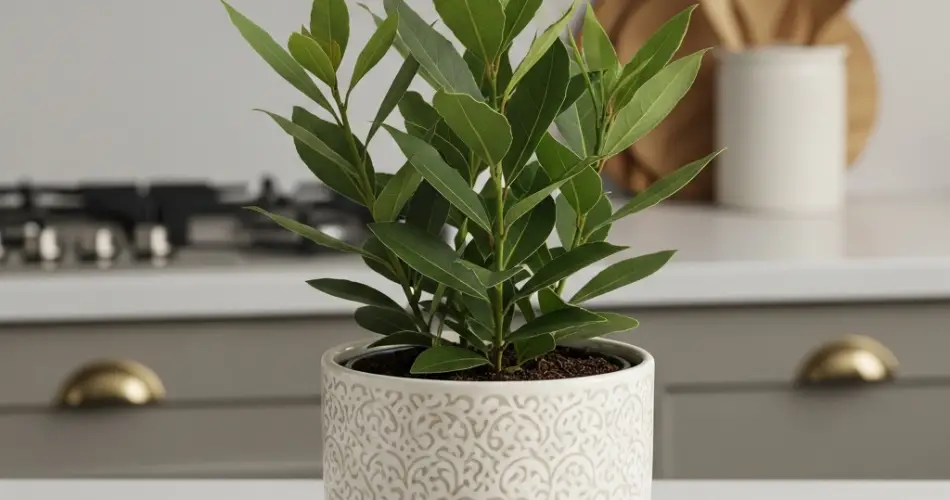Bay leaves are an essential ingredient in countless savory dishes—from soups and stews to sauces and marinades. The aromatic leaves of the bay laurel tree (Laurus nobilis) lend a subtle depth of flavor that enhances a wide variety of recipes. Fortunately, you don’t need a backyard or a large garden to enjoy fresh bay leaves at home. This versatile and attractive herb can be grown indoors, making it ideal for apartment dwellers or anyone with limited space.
By growing bay laurel in a pot on your kitchen windowsill or countertop, you’ll always have fresh leaves ready to elevate your meals. Here’s everything you need to know to cultivate a thriving bay leaf plant indoors.
Why Grow Bay Laurel Indoors?
Bay laurel is a slow-growing evergreen shrub or small tree that adapts well to container life. When grown indoors, it serves not only as a culinary resource but also as a decorative houseplant. The glossy, deep green leaves are attractive year-round and release a pleasant aroma when crushed.
Benefits of growing bay indoors include:
-
Convenient access to fresh leaves for cooking
-
Control over growing conditions (light, water, and soil)
-
Protection from pests and extreme weather
-
A clean, fragrant addition to your kitchen decor
With a bit of attention and the right setup, bay laurel can thrive indoors for years.
Choosing the Right Container
Bay laurel prefers slightly snug pots, especially when young. Start with a container about 20–25 cm (8–10 inches) in diameter, with several drainage holes to prevent water from pooling around the roots.
As the plant grows, repot every 2–3 years into a slightly larger container. Use pots made of clay, ceramic, or plastic—whatever suits your kitchen aesthetic—as long as they support healthy root drainage.
Add a shallow tray beneath the pot to catch excess water and protect your countertop or windowsill.
Soil and Drainage
Well-draining soil is essential for healthy bay laurel. Use a high-quality potting mix blended with perlite or coarse sand to enhance drainage. You can also add a small amount of compost to provide gentle nutrients.
Bay laurel prefers a slightly acidic to neutral pH (around 6.0 to 7.0). Avoid dense, heavy soils that retain too much water and suffocate the roots.
Planting and Light Requirements
Bay trees need plenty of sunlight to grow well indoors. Place your container in a sunny spot that receives at least 5–6 hours of direct light per day. A south- or west-facing window is ideal. If your kitchen lacks bright light, consider supplementing with a grow light.
Rotate the plant regularly to ensure all sides receive equal exposure, encouraging even growth and preventing the plant from leaning toward the light source.
Watering and Feeding
Bay laurel prefers evenly moist—but not soggy—soil. Allow the top 2–3 cm of soil to dry out between waterings. Use a watering can with a narrow spout to water directly at the base of the plant and avoid splashing the foliage.
In warmer months, bay trees may need watering once or twice a week. In winter, reduce watering as the plant’s growth slows.
Feed monthly during the spring and summer with a diluted, balanced liquid fertilizer or a gentle organic blend. Avoid overfeeding, which can lead to overly fast, weak growth.
Pruning and Maintenance
Bay laurel grows slowly and responds well to pruning. You can shape it into a compact bush or let it take on a small tree form, depending on your space and preference.
-
Prune lightly in early spring to remove dead leaves or stems and shape the plant.
-
Pinch off the tips of new growth to encourage bushier branching.
-
Remove yellowing leaves promptly to keep the plant healthy.
Bay laurel doesn’t need constant pruning, but occasional trimming keeps it tidy and encourages fresh new leaves.
Harvesting Bay Leaves
Once your plant is well established, you can begin harvesting:
-
Choose mature, dark green leaves for the best flavor.
-
Use clean scissors to snip a few leaves at a time from different parts of the plant.
-
Avoid harvesting too many leaves at once; allow time for the plant to regrow.
Fresh bay leaves can be used immediately or air-dried and stored in a sealed container for long-term use. Dried leaves become more aromatic over time and retain flavor for up to a year.
Common Problems and Solutions
-
Yellowing Leaves: Often a sign of overwatering or poor drainage. Check the soil and adjust watering frequency.
-
Slow Growth: Normal for bay laurel, especially indoors. Ensure proper lighting and avoid overfeeding.
-
Pests: Indoors, bay trees may attract scale insects or spider mites. Remove pests with a damp cloth or treat with a mild neem oil spray.
Conclusion
A bay leaf plant is a practical and beautiful addition to any kitchen. With just a pot, some sunlight, and basic care, you can grow this versatile herb indoors and enjoy its flavor and fragrance all year long. Whether you’re adding depth to a simmering stew or simply admiring its elegant leaves, a kitchen-grown bay tree is both useful and rewarding—even if you don’t have a yard.



